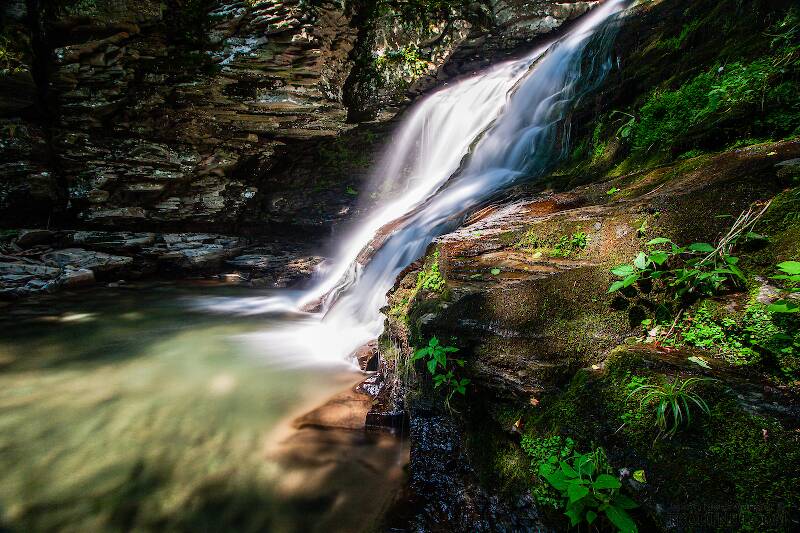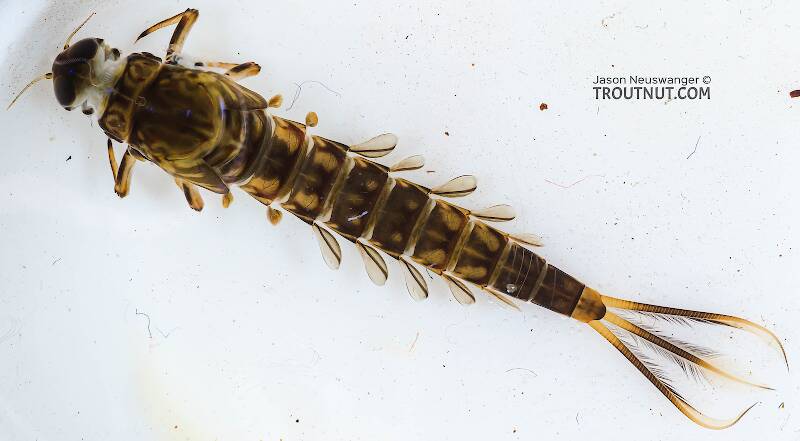
Blue-winged Olives
Baetis
Tiny Baetis mayflies are perhaps the most commonly encountered and imitated by anglers on all American trout streams due to their great abundance, widespread distribution, and trout-friendly emergence habits.


Mayfly Species Ameletus velox (Brown Duns)
Where & when
This is the most important Western species in its genus and it can produce fishable hatches.In 7 records from GBIF, adults of this species have been collected during June (57%), July (29%), and August (14%).
In 5 records from GBIF, this species has been collected at elevations ranging from 5351 to 9216 ft, with an average (median) of 8871 ft.
Species Range
Physical description
Most physical descriptions on Troutnut are direct or slightly edited quotes from the original scientific sources describing or updating the species, although there may be errors in copying them to this website. Such descriptions aren't always definitive, because species often turn out to be more variable than the original describers observed. In some cases, only a single specimen was described! However, they are useful starting points.
Male Spinner
Wing length: 13 mm
A large clear-winged species, with dark brown ganglionic markings.
Head brown, with a black stripe across the median carina. Thorax reddish brown. The red tinges are most evident on the lateral margins of the mesothoracic scutellum and an oblique streak across the pleura from below the wing root to a point anterior to the base of the middle leg. Fore leg reddish brown. Middle and hind legs yellowish. Wings hyaline. Longitudinal veins reddish brown, cross veins paler. No cross veins margined. Stigmatic cross veins forked and anastomosed.
Abdomen pale yellowish to reddish brown. Segments 2-7 semi-translucent, 7-10 opaque, tinged with reddish brown. Tergites narrowly pale on the posterior margins, smoky brown in the median area. A smoky lateral line lies above the pleural fold; antero-lateral angles pale. Tracheae tend to form a fine dark network on many of the tergites. Ganglionic areas of sternites marked with blackish brown; pale smoky submedian marks may be visible. Tails reddish brown, narrowly darker at joinings. No long spine below the penes on the inner margin, as in Ameletus vernalis (see fig. 116).
Specimens of the Mayfly Species Ameletus velox
2 Nymphs
Start a Discussion of Ameletus velox
References
- Arbona, Fred Jr. 1989. Mayflies, the Angler, and the Trout. Nick Lyons Books.
- Caucci, Al and Nastasi, Bob. 2004. Hatches II. The Lyons Press.
- Knopp, Malcolm and Robert Cormier. 1997. Mayflies: An Angler's Study of Trout Water Ephemeroptera . The Lyons Press.
- Needham, James G., Jay R. Traver, and Yin-Chi Hsu. 1935. The Biology of Mayflies. Comstock Publishing Company, Inc.
Mayfly Species Ameletus velox (Brown Duns)
Species Range
Common Name
Resources
- NatureServe
- Integrated Taxonomic Information System
- Global Biodiversity Information Facility
- Described by Dodds (1923)



